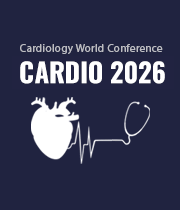Title : Comparison of traditional and intensive cardiac rehabilitation on dietary behavior and clinical risk factor outcomes
Abstract:
Purpose: The objective of this study was to assess differences in dietary behavior and clinical risk factor outcomes and explore predictors of change among patients participating in traditional and Pritikin intensive Cardiac Rehabilitation (CR).
Methods: This secondary analysis of cardiac registry data from 2015-2021 included patients participating in traditional CR (n=420) or Pritikin intensive CR (n=1005) at a single hospital site. Dietary behavior outcomes included the Rate Your Plate measure while clinical risk factor outcomes included fasting lipids, blood pressure, anthropometrics, functional outcomes, and psychosocial assessment. Analysis of covariance examined a difference in Rate Your Plate scores between CR groups. Multivariate analysis of covariance was used to determine differences in clinical risk factor variables between CR groups. Predictors of change in dietary behavior and clinical risk factors were determined through multiple bivariate linear regression models within each CR group.
Results: Both CR programs led to significant improvements though more change was observed among Pritikin intensive CR participants in dietary behavior, anthropometrics, and fasting lipids. Status as a current or recent smoker were not significant predictors of dietary behavior. Male sex, status as a current or recent smoker, beta blockers and angiotensin-converting enzyme inhibitors prescribed were not significant predictors of total cholesterol, low-density lipoprotein cholesterol, high-density lipoprotein cholesterol, or non-high-density lipoprotein cholesterol for traditional and Pritikin intensive CR groups. There were not significant predictors of blood pressure, body mass, or waist circumference.
Conclusion: Although participation in either CR program yielded cardiometabolic benefits, Pritikin intensive CR patients exhibited significantly greater improvements in dietary behavior and clinical risk factors.



